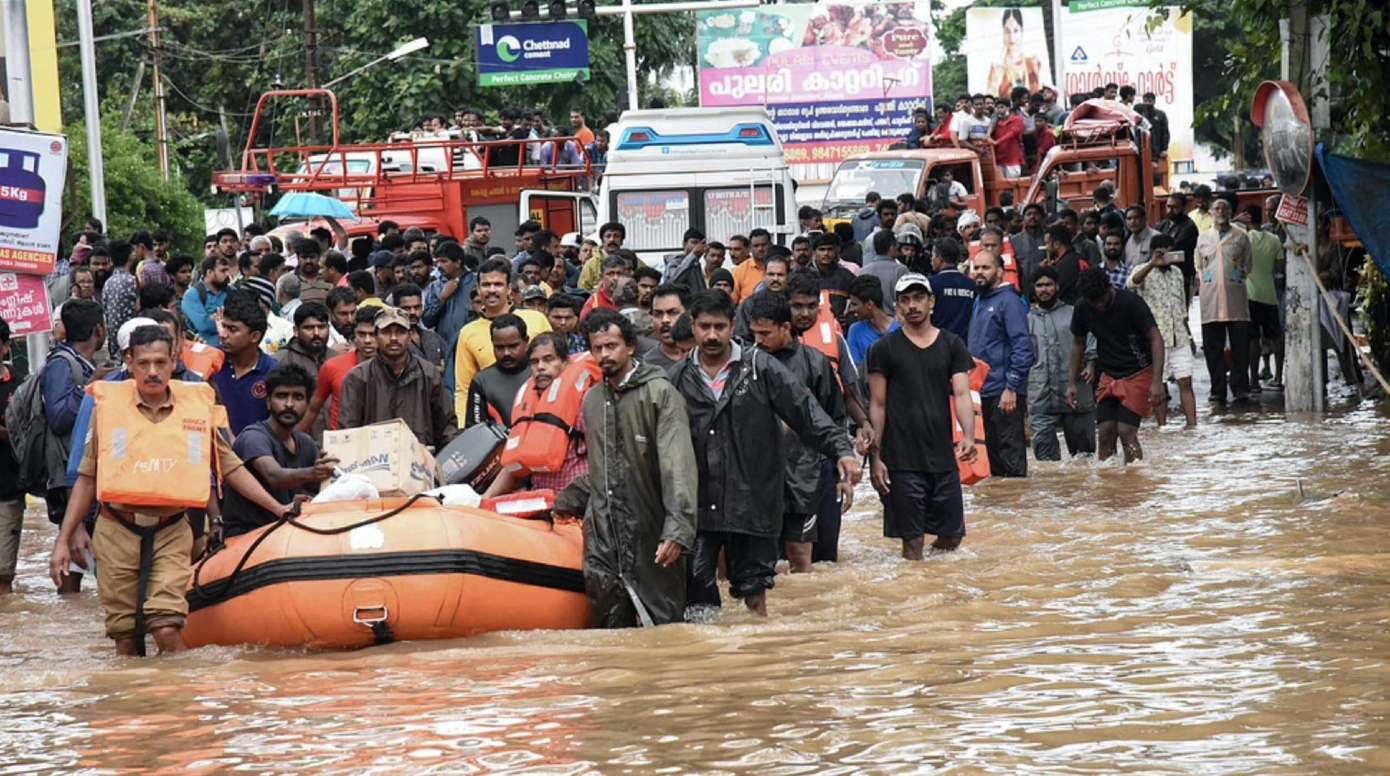
Copyright infringement not intended
Picture Courtesy: https://factly.in/explainer-what-are-the-disaster-relief-funds-sdrf-ndrf/
Context: The recent standoff between Tamil Nadu, Karnataka, and the central government over the release of the National Disaster Relief Fund (NDRF) exposes inherent vulnerabilities in India's disaster management framework, causing delays in aid distribution and hindering recovery efforts.
About National Disaster Relief Fund (NDRF)
- The NDRF, established under Section 46 of the Disaster Management Act, 2005, provides financial assistance to states facing severe disasters when the State Disaster Response Fund (SDRF) is inadequate.
- The entire contribution to the NDRF comes from the Central Government. The allocation of funds is based on the recommendations of successive Finance Commissions.
- The NDRF covers disasters of severe nature, including cyclones, droughts, earthquakes, fires, floods, tsunamis, hailstorms, landslides, avalanches, cloudbursts, pest attacks, frost, and cold waves.
- Contributions to the NDRF can be made by individuals or institutions through physical instruments, or the Bharatkosh portal.
About State Disaster Response Fund (SDRF)
- The SDRF constituted under Section 48(1)(a) of the Disaster Management Act, 2005, is the primary fund available to State Governments for immediate responses to notified disasters.
- The SDRF is funded jointly by the Central Government and State Governments in a ratio of 75:25 for general category states/UTs and 90:10 for special category states/UTs (North-Eastern and Himalayan States).
- The SDRF allocation includes both the State Disaster Response Fund (80% of SDRMF) and the State Disaster Mitigation Fund (20% of SDRMF), as recommended by the 15th Finance Commission.
- SDRF covers a range of disasters, and states can also use up to 10% of the funds for local disasters not included in the notified list, subject to specified conditions.
Significance of NDRF/SDRF
- Timely Response: It ensures a swift and coordinated response to disasters, enabling governments to deploy resources promptly to save lives and alleviate suffering.
- Resource Availability: Having dedicated funds for disaster relief minimises delays in mobilising critical resources, such as emergency supplies, equipment, and personnel.
- Recovery and Reconstruction: It supports the initial recovery phase by facilitating rapid restoration of infrastructure, livelihoods, and essential services.
- Resilience Building: Investing in disaster response and recovery, contributes to building resilience within communities and strengthening disaster preparedness.

NDRF encounters several challenges
- Funding Adequacy: Ensuring sufficient and sustainable funding for NDRF to address diverse and escalating disaster risks is a persistent challenge, especially amid the increasing frequency and intensity of disasters.
- Allocation and Utilisation: Efficient allocation and utilisation of NDRF funds require robust governance mechanisms to prevent mismanagement, corruption, or inefficient spending.
- Equitable Distribution: Ensuring equitable distribution of NDRF resources across regions and vulnerable populations, particularly in large and diverse countries, poses logistical and administrative challenges.
- Interagency Coordination: Coordinating efforts among multiple agencies, including government departments, NGOs, and international partners, to optimise resource deployment and avoid duplication of efforts.
Steps Taken to Strengthen NDRF
- Policy Reforms: Regular review and update of disaster management policies and funding mechanisms to align with evolving risks and priorities.
- Capacity Building: Investing in training, technology, and infrastructure to enhance disaster response capabilities and preparedness.
- Risk Reduction Strategies: Emphasising disaster risk reduction measures, such as early warning systems, community-based planning, and resilient infrastructure development.
- Public Awareness and Engagement: Educating communities about disaster preparedness and response protocols to foster a culture of resilience and self-reliance.
|
The Fifteenth Finance Commission has outlined specific allocation breakdowns for SDRF utilisation:
●40% for response and relief works.
●30% for recovery and reconstruction efforts.
●10% for preparedness and capacity-building initiatives.
|
Way Forward for NDRF
- Increased Funding Allocation: Advocating for greater budgetary allocations to NDRF to enhance readiness and capacity for disaster response.
- Transparent Governance: Implementing transparent and accountable governance frameworks for fund allocation, utilisation, and monitoring.
- Integrated Approach: Adopting an integrated approach to disaster management that prioritises prevention, preparedness, response, and recovery.
- Partnership and Collaboration: Fostering partnerships with international organisations, private sector entities, and civil society organisations to leverage resources and expertise.
Conclusion
- National Disaster Relief Funds (NDRF) play a vital role in enabling effective disaster response and recovery. Despite challenges, ongoing efforts to strengthen NDRF through enhanced funding, governance reforms, and community engagement are essential for building resilient societies capable of mitigating and responding to diverse disaster scenarios. By investing in disaster preparedness and response, governments can reduce human suffering, protect livelihoods, and promote sustainable development in disaster-prone regions.

Must Read Articles:
NATIONAL DISASTER RESPONSE FUND
Source:
National Disaster Risk Management Fund (NDRMF) and State Disaster Risk Management Fund (SDRMF)
WIKIPEDIA
|
PRACTICE QUESTION
Q. In the context of the State Disaster Response Fund (SDRF), consider the following statements:
1. The Union Government contributes 75% of the allocation in SDRF in two equal instalments as per the recommendation of the Finance Commission.
3. Funds from SDRF must be used to meet the expenditure for providing immediate relief to the victims.
4. For local disasters specific to states, other than the notified ones, the state government can use up to 10% of SDRF funds.
How many of the above statements are correct?
A) Only one
B) Only two
C) All three
D) None
Answer: C
|




